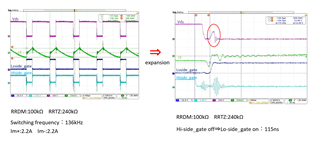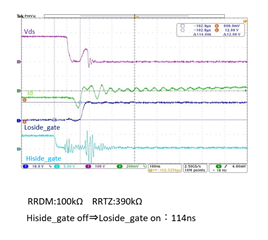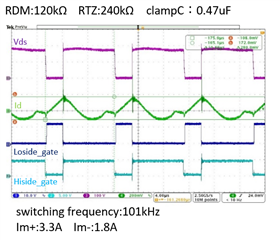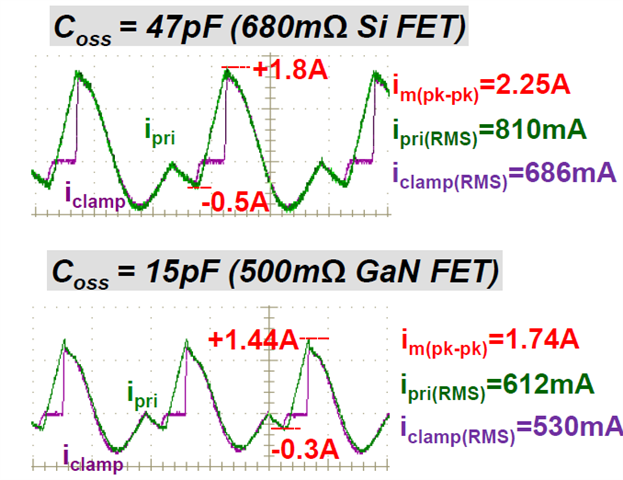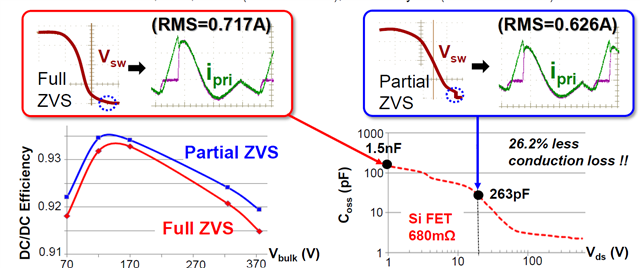Tool/software:
Hello,
I would like to ask you about the behavior of UCC28782 when Vsw drops.
The attached figure shows the waveform when Vsw (Vds) drops.
When the low-side turns on, Vsw rises again. The part circled in red.
I would like to eliminate this part circled in red, is there a way to do this?
I also thought that I could eliminate the part circled in red by extending Tz, so I changed RRTZ from 240kΩ to 390kΩ.
However, Tz did not extend at all. Please let me know if there is a reason why Tz does not change.
Best regards,
